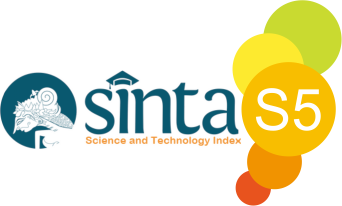The The Long- and Short-Run Effects of GDP, Labor Force, and Industrial Growth on Unemployment in Indonesia
DOI:
https://doi.org/10.59086/jam.v3i2.627Keywords:
Unemploymen, ASEAN, ECM, GDPAbstract
Downloads
References
Anyanwu, J. C. (2017). Manufacturing value added development in North Africa: Analysis of key drivers. Asian Development Policy Review, 5(4), 281-298. http://www.aessweb.com/
Bankapur, V. M., Nayak, S., & Sangam, S. L. (2018). Science Indicators to measure papers with the Gross Domestic Product Output (GDP) and Economic Indicators. J. Inf. Syst. Manag, 8(136), 135-144. https://doi.org/10.6025/jism/2018/8/4/135-144
Barnett, W. A. (2004). An Interview with Paul A. Samuelson. Macroeconomic Dynamics, 8(4), 519-542. https://doi.org/10.1017/S1365100504040039
Bartolucci, F., Choudhry, M. T., Marelli, E., & Signorelli, M. (2018). GDP dynamics and unemployment changes in developed and developing countries. Applied Economics, 50(31), 3338-3356. https://doi.org/10.1080/00036846.2017.1420894
Basuki, A. T., & Prawoto, N. (2019). Analisis Regresi: dalam Penelitian Ekonomi dan Bisni. Depok: Rajagrafindo Persada.
Bryniuk, K. (2023). Is the Gross Domestic Product (GDP) a Reliable Indicator of the Economic Growth and Future Economy of the United States of America? Open Access Library Journal, 10(4), 1-10. https://doi.org/10.4236/oalib.1110100
CM, J., Hoang, N. T., & Yarram, S. R. (2025). Interaction Effect of Economic Globalization and Income per Capita on Unemployment. Economies, 13(3), 72. https://doi.org/10.3390/economies13030072
Gašperová, L., Možuchová, L., & Rostášová, M. (2017). Economic impact and multiplier effect of university on economic development of the host region. In ICERI2017 Proceedings (pp. 8487-8493). IATED. https://doi.org/10.21125/iceri.2017.2297
Granger, C. W. J. (2004). Time series analysis, cointegration, and applications. American Economic Review, 94(3), 421-425. https://www.aeaweb.org/articles?id=10.1257/0002828041464669
Gujarati, D. N., & Porter, D. C. (2009). Basic econometrics. McGraw-hill.
Herranz, E., Gentle, J., Wang, G., & Risk, T. (2017). Unit Roots in Time Series with Changepoints. International Journal of Statistics and Probability, 6(6), 593-625. https://doi.org/10.5539/ijsp.v6n6p127
Irpan, H. M., Saad, R. M., Nor, A. H. S. M., Noor, A. H. M., & Ibrahim, N. (2016, April). Impact of foreign direct investment on the unemployment rate in Malaysia. In Journal of Physics: Conference Series (Vol. 710, No. 1, p. 012028). IOP Publishing. https://doi.org/10.1088/1742-6596/710/1/012028
Klinger, S., & Rothe, T. (2010). The impact of labour market reforms and economic performance on the matching of short-term and long-term unemployed (No. 13/2010). IAB-Discussion Paper. https://www.econstor.eu/handle/10419/57454
Lee, G. H., & Parasnis, J. (2014). Discouraged workers in developed countries and added workers in developing countries? Unemployment rate and labour force participation. Economic Modelling, 41, 90-98. https://doi.org/10.1016/j.econmod.2014.04.005
Mankiw, N. G., & Taylor, M. P. (2020). Economics. Cengage Learning EMEA.
Moh'd AL-Tamimi, K. A., & Jaradat, M. S. (2019). The role of small medium enterprises in reducing the problem of unemployment in Jordan. International Journal of Development and Economic Sustainability, 7(2), 28-36.
Oderinde, M. A., & Adeniyi, I. S. Training and Development and Employee Performance in the Banking Industry: A Study of Selected Branches of United Bank for Africa, Lagos State, Nigeria. ESCAE JOURNAL OF MANAGEMENT AND SECURITY STUDIES (EJMSS).
Samuda, S. J. A. (2023). How Global Value Chains Affect Economic Output and Unemployment: An Empirical Evidence from ASEAN Countries. Bulletin of Monetary Economics and Banking, 26(3), 513-538. https://doi.org/10.59091/2460-9196.1795
Sanchez, J. M., & Liborio, C. S. (2012). The relationships among changes in GDP, employment, and unemployment: this time, it’s different. Economic Synopses, 2012(2012-05-18). https://fraser.stlouisfed.org/files/docs/publications/frbsl_econosynops/economicsynopses_stls_20120518.pdf
Schubert, T., & Kroll, H. (2016). Universities’ effects on regional GDP and unemployment: The case of Germany. Papers in Regional Science, 95(3), 467-490. https://doi.org/10.1111/pirs.12150
Shuaib, I. M., Ekeria, O. A., & Ogedengbe, A. F. (2015). The impact of globalization on the growth of Nigerian economy from 1960–2010: Error correction model analysis. British Journal of Economics, Management and Trade, 7(1), 70-86. http://www.sciencedomain.org/review-history.php?iid=815&id=20&aid=8351
Sinaga, O., Saudi, M. H. M., & Roespinoedji, D. (2018). The relationship between economic indicators, gross domestic product (GDP) and supply chain performance. Polish Journal of Management Studies, 18(1), 338-352. https://doi.org/10.17512/pjms.2018.18.1.25
Szirmai, A., & Verspagen, B. (2015). Manufacturing and economic growth in developing countries, 1950–2005. Structural change and economic dynamics, 34, 46-59. https://doi.org/10.1016/j.strueco.2015.06.002
Todaro, M. P., & Smith, S. C. (2009). Economic development. Pearson education.
Veracierto, M. (2008). On the cyclical behavior of employment, unemployment and labor force participation. Journal of Monetary Economics, 55(6), 1143-1157. https://doi.org/10.1016/j.jmoneco.2008.07.008
Downloads
Published
How to Cite
Issue
Section
License
Copyright (c) 2024 Agus Tri Basuki

This work is licensed under a Creative Commons Attribution 4.0 International License.
This is an open-access journal. All works are published under the Creative Commons license CC-BY which means that all content is freely available at no charge to the user or his/her Institution. Users are allowed to read, download, copy, write, improve, and create derivative creation even for other lawful purposes, this license permits anyone to, as long as they cite and license the derivative creation under similar terms

This work is licensed under a Creative Commons Attribution 4.0 International License.
Most read articles by the same author(s)
- Agus Tri Basuki, ASEAN Economic Growth: The Influence of Inflation, Trade, and Industrial Policy , Balance : Jurnal Akuntansi dan Manajemen: Vol. 4 No. 1 (2025): April 2025
- Agus Tri Basuki, Assessing the Long-Term and Short-Term Influences on Trade Value in Indonesia: Evidence from Economic, Industrial, and Monetary Factors , Balance : Jurnal Akuntansi dan Manajemen: Vol. 3 No. 3 (2024): Desember 2024


















